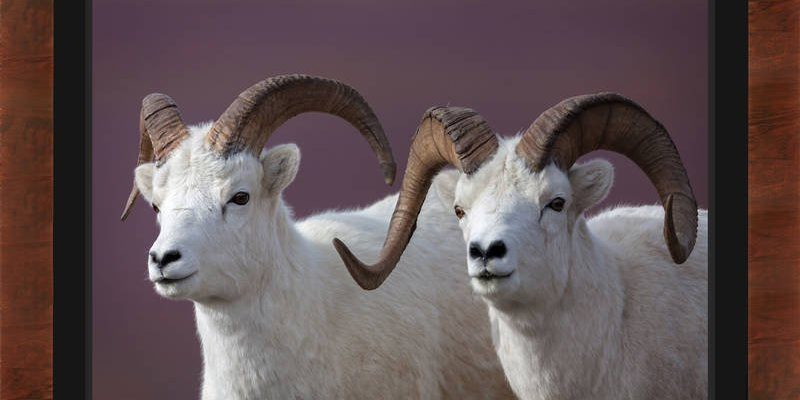![Comparing The Dall Sheep Vs. [Similar Species]](https://gudri.com/wp-content/uploads/2025/06/Comparing_The_Dall_Sheep_Vs___Similar_Species__image_0.jpg)
Physical Characteristics
One of the first things that grabs your attention about Dall sheep and Stone sheep is their appearance. Dall sheep, especially males, are easily recognized by their striking white coats and impressive curled horns. Their wool acts as insulation, keeping them warm during chilly mountain nights. On the other hand, Stone sheep, while similar in stature, usually sport a darker coat that ranges from grayish-brown to black, making them blend perfectly into their rocky environments.
What about those horns? Well, male Dall sheep have massive, spiraled horns that can grow to nearly three feet long. In contrast, Stone sheep’s horns are slightly smaller but can also have a beautiful curl. These horns are more than just for show; they play a role in mating displays and fights for dominance among males. Just imagine two rams butting heads on a cliffside—it’s an intense yet fascinating spectacle!
Habitat and Distribution
Dall sheep predominantly roam the mountainous regions of Alaska and the Yukon. They thrive in open alpine meadows and rocky cliffs, where they can easily escape predators and find food. In contrast, Stone sheep are located mainly in northern British Columbia and parts of the Yukon. They prefer the more wooded, rugged terrains where they can blend in with the shadows.
Both species are well-adapted to harsh environments, but their habitat choices influence their survival. Dall sheep often graze in areas with more vegetation, while Stone sheep might navigate through dense forests and steep slopes. You can think of their habitats like different neighborhoods in a city; they each have their charm and challenges that keep the respective sheep thriving.
Behavior and Social Structure
Behaviorally, both Dall and Stone sheep exhibit fascinating social structures. They live in groups, typically led by a dominant ram. These social bonds help protect the herd from predators, like wolves and mountain lions. However, their social structures can differ slightly.
Dall sheep tend to form larger herds, especially during the winter months when food is scarce. This social gathering can help them stay warm and alert to danger. Stone sheep, however, often break into smaller groups, which may provide better camouflage against predators lurking in the forests.
Honestly, observing their social dynamics is like watching a well-rehearsed play. Each character has a role to play, from the protective leader to the watchful sentinels on lookout for danger.
Diet and Foraging
When it comes to dinner time, both Dall and Stone sheep are primarily herbivores. They graze on grasses, shrubs, and other vegetation found in their habitats. However, their specific diets can vary based on availability.
Dall sheep enjoy a wide range of plants, including forbs and lichens, which are often abundant in their alpine meadows. Stone sheep, on the other hand, have been known to consume more woody plants and shrubs found in the forests. This slight difference in diet helps each species thrive in their chosen environments.
Imagine them as picky eaters in a buffet line; they each have their favorites that help them stay healthy and robust.
Reproduction and Lifespan
The reproduction habits of Dall and Stone sheep also present some interesting contrasts. Both species have a similar breeding season that typically occurs in the fall. During this time, you might witness rams competing through headbutts and displays of strength. The victor gets to mate with the ewes, ensuring that strong genes are passed on.
Pregnancy lasts about six months, and ewes usually give birth to a single lamb, sometimes twins. After about a year, lambs are weaned, and they begin to learn the ropes of their rugged surroundings. In the wild, sheep can live around 10 to 15 years.
While their reproductive cycles follow similar patterns, the environment’s demands can impact their overall success rates. Survival for a lamb can sometimes feel like a game of hide and seek, where the goal is to stay hidden from predators while learning to thrive in the wild.
Conservation Status
Conservation is a critical aspect when discussing the Dall sheep and Stone sheep. Both species face challenges due to habitat loss and hunting pressures. Dall sheep populations are generally stable but still require management efforts to ensure their future. On the flip side, Stone sheep have experienced declines in some areas due to habitat encroachment and overhunting.
Efforts to conserve these species include regulated hunting practices and habitat restoration initiatives. Conservationists work tirelessly to ensure their ecosystems remain healthy, allowing these magnificent animals to thrive for future generations.
Think of it as a team sport for wildlife advocates, where everyone plays a crucial role in keeping the game fair and fun for all players involved.
Wrapping It Up
In the grand scheme of wildlife, the Dall sheep and Stone sheep are remarkable animals that play vital roles in their ecosystems. Although they share many similarities, their differences in habitat, appearance, and behavior provide a rich tapestry of life on our planet.
So, the next time you find yourself pondering the majestic creatures of the wild, remember the unique paths Dall sheep and Stone sheep tread. Whether they’re scaling rocky cliffs or blending into the forest, they each tell a story of survival and adaptation that’s worth appreciating. Their existence reminds us of the beauty of nature and the importance of preserving it.

